In almost 200 square meters, a strong history of a city is concentrated. Sucre Square, in honor of the Venezuelan hero Antonio José de Sucre, has witnessed important moments in history, the first independence town council of Venezuela, after the triumph of the Battle of Carabobo and the first of all South America on June 31, 1821. The creation of the first University of the City, under the name of "Colegio Nacional de Primera Categoría".
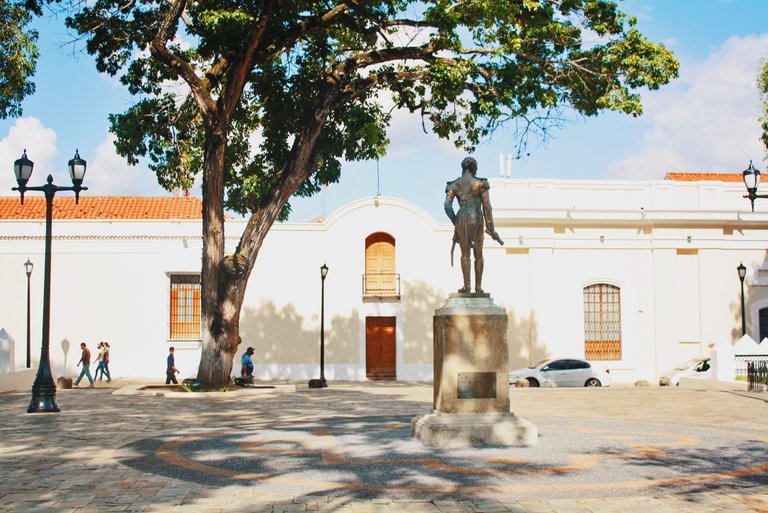
Photo by me
En casi 200 metros cuadrados, se concentra una fuerte historia de una cuidad. La plaza Sucre, en honor al prócer venezolano Antonio José de Sucre, ha sido testigo, de momentos importantes en la historia, el primer Cabildo independentista de Venezuela, luego del triunfo de la Batalla de Carabobo y los primeros de toda Suramérica el 31 de Junio de 1821 . La creación de la primera Universidad de la Cuidad, bajo del nombre de "Colegio Nacional de Primera Categoría”.
In this same area of the city, a very interesting fact occurred that has been almost hidden for history lovers, some of the minutes signed in the decree of independence in 1811, were lost for many years, without these documents, future generations had no physical support of such an important act for the entire continent that decreed the beginning of the independence of the countries of the region. As described by the chronicler Guillermo Mujica Sevilla, "In this last year (1907), in the house of the widow of Engineer Navas Spínola, the original minutes were found in several bound books that included minutes elaborated by the Congress of 1811. It is said that these books were kept or hidden in Valencia after the closing of the Congress of 1811-1812.
This congress was closed in Valencia due to the warlike actions of the Spanish officer Domingo Monteverde, who progressively occupied the recently liberated cities; in addition, the earthquake of 1812 was an important factor in the closing of the congress. Little has it been divulged that the congress that declared the Independence of 1811 continued its deliberations in Valencia, where, as we have just said, it closed its sessions in 1812. The books containing the Act of Independence were kept in Valencia until 1907, when, thanks to the efforts of González Guinán and Dr. Ricardo Smith, they were found in the house of Mrs. Navas Spínola. Dr. Francisco González Guinán delivered this book to President Cipriano Castro through the President of the State of Carabobo, Dr. Samuel Niño."
En este mismo espacio de la cuidad, ocurrió un hecho bastante interesante que ha pasado casi oculto para los amantes de la historia, algunas de las actas firmadas en el decreto de independencia en 1811, estuvieron perdidas por muchos años, sin estos documentos, las futuras generaciones no tenían ningún tipo de respaldo físico de tan importante acto para todo el continente que decretaba el inicio de la independencia de los países de la región. así lo describe el cronista Guillermo Mujica Sevilla, “En este último año (1907), en la casa de la viuda del Ingeniero Navas Spínola fue encontrado el acta original en varios libros empastados que abarcaban actas elaboradas por el Congreso de 1811. Según se dice, estos libros fueron guardados o escondidos en Valencia a raíz de la clausura del Congreso de 1811-1812.
Este congreso se clausuró en Valencia debido a las acciones guerreras del oficial español Domingo Monteverde, quien fue ocupando progresivamente las recién liberadas ciudades; además, el terremoto de 1812 fue un factor importante en la clausura del congreso. Poco se ha divulgado que el congreso que declaró la Independencia de 1811 continuó sus deliberaciones en Valencia, donde, según acabamos de decir, clausuró sus sesiones en 1812. Los libros que contenían el Acta de Independencia fueron guardados en Valencia hasta 1907, cuando gracias a la gestión de González Guinán junto con el doctor Ricardo Smith fueron hallados en la casa de la señora de Navas Spínola. El doctor Francisco González Guinán entregó este libro al presidente Cipriano Castro por intermedio del presidente del estado Carabobo, doctor Samuel Niño.”
.
The Municipal Theater of Valencia, inaugurated in 1894, under a strong French style of architecture, due to the symmetry of all its spaces with a neoclassical and neo-baroque design, and its resemblance to the Opera House in Paris, its manager Antonio Malaussena, had the intention of creating a visual space inspired by the strong European movement of construction and style.
.
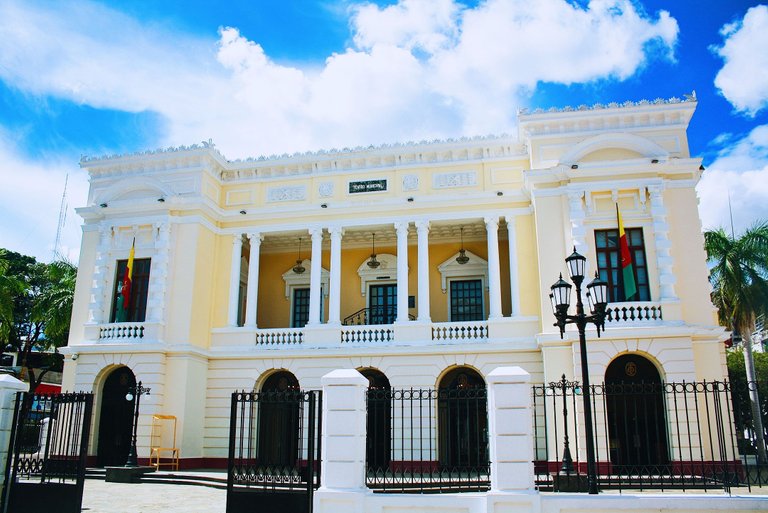
Photo by me
El teatro Municipal de Valencia, inaugurado en 1894, bajo un fuerte estilo francés de arquitectura, debido a la simetría de todos sus espacio con un diseño neoclásico y neobarroco, y su parecido con el Teatro de la Opera de Paris, su encargado Antonio Malaussena, tuvo la intención de crear un espacio visual inspirado en el fuerte movimiento europeo de construcción y estilo.
.
In its interior, the painter Antonio Herrera Toro, made a beautiful ceiling panel, inspired by European artists and Venezuelan characters such as Andres Bello, The chandelier type lamp that we see in the photo, illuminates the entire space, giving to understand, the most sublime of the arts reaches the entire theater.
.
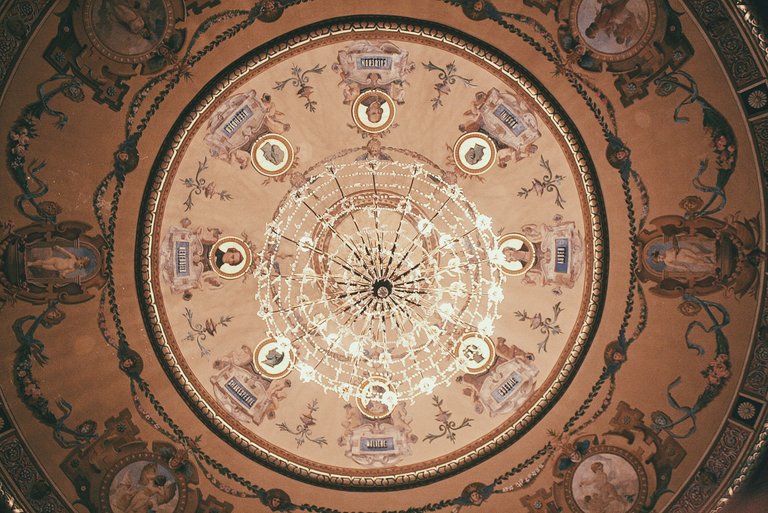
En su interior, el pintor Antonio Herrera Toro, realiza un hermoso plafón en el techo, inspirado en artistas europeos y personajes venezolanos como Andrés Bello, La lampara tipo araña que vemos en la foto, ilumina todo el espacio, dando a entender, lo mas sublime de las artes llega a todo el teatro.
.
In this space is the Ramon Zapata Theater School, inaugurated in 1958, in honor of this worthy citizen of the city, who in life was a baritone and actor of zarzuelas, taking numerous tours throughout Venezuela and some Latin American countries, his theatrical presentations, represented dramas, comedies, operettas and zarzuelas.
.

En estos espacio, se encuentra la escuela de Teatro Ramon Zapata, inaugurado en 1958, en honor a este digno ciudadano de la cuidad, quien en vida fuera un barítono y actor de zarzuelas, llevando numerosas giras por toda Venezuela y algunos países de Latinoamérica, sus presentaciones teatrales, representaban dramas, comedias, operetas y zarzuelas.
.
Despite pandemic, iconic characters of the city still gather, such as the famous Valencian singer and bohemian José Rengifo, known by the city as "Peco Kambas" for his afro similar to the former Caracas "boleros" singer.
.
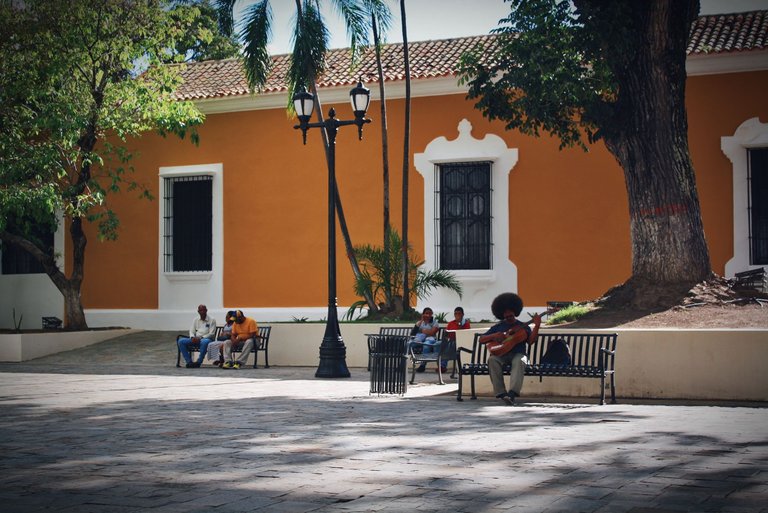
A pesar de la pandemia, aun se reúnen personajes icónicos de la cuidad, como el famoso cantante y bohemio valenciano José Rengifo, conocido por la cuidad como “ “Peco Kambas” por el afro similar al otrora cantante caraqueño de boleros.
.
is 200 square meters that keep the most illustrious moments of the city and its history, no matter if it is big or small, it is the living past that is maintained day by day, preserving its essence, becoming a timeless space.
.
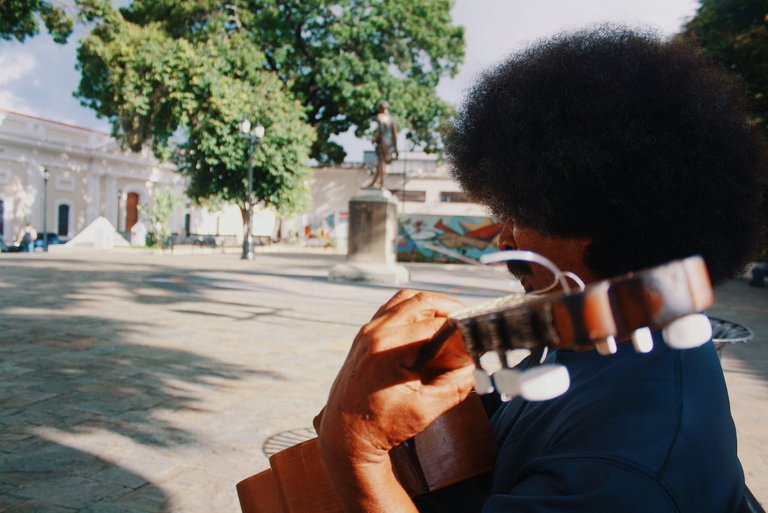
Son 200 metros cuadrados que guardan los momentos más ilustres de la cuidad y su historia, no importa que sea grande o pequeña, es el pasado vivo que se mantiene día a día, preservando su esencia, convirtiéndose en un espacio atemporal
.